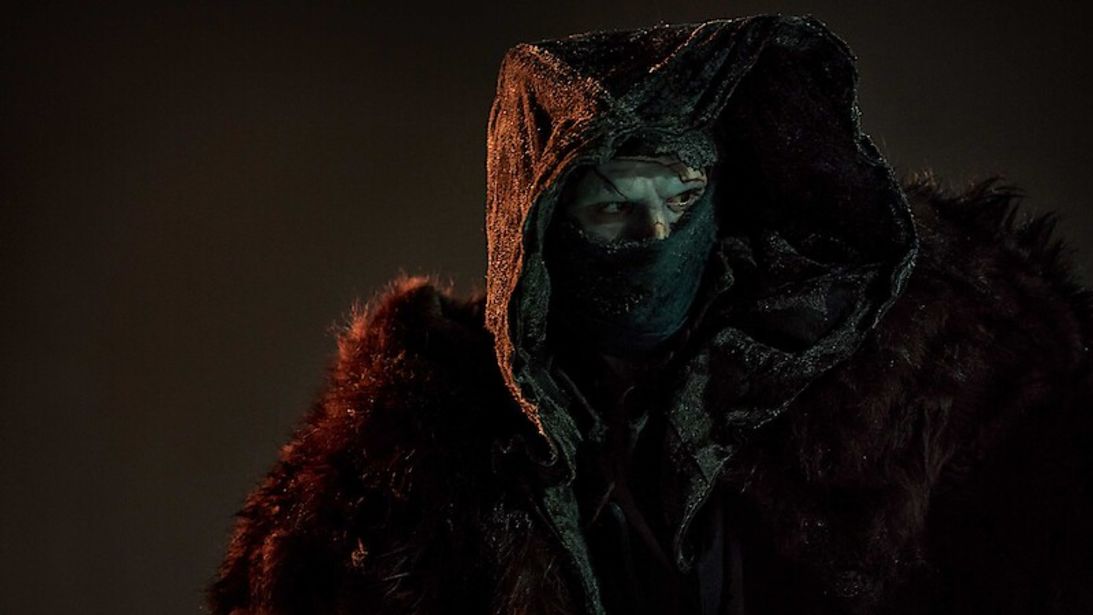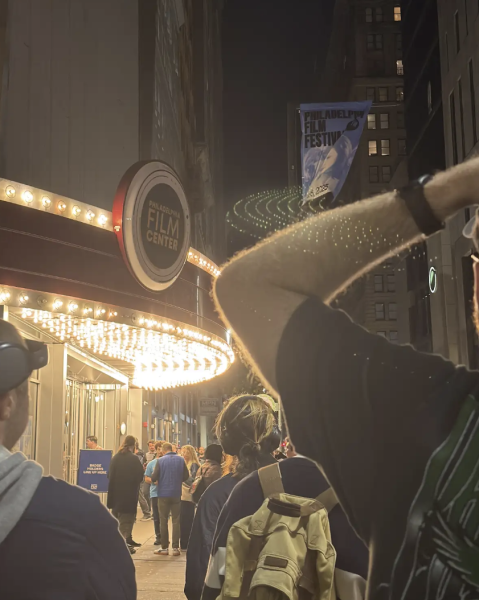
Jacob Elordi as the Creature in del Toro’s Frankenstein. Image by Ken Wororner for Netflix.
Disclaimer: This article contains spoilers for Frankenstein (2025).
On October 19, I had the chance to see Guillermo del Toro’s Frankenstein (2025) at the Philadelphia Film Festival before its nationwide release on Netflix on November 7. The film turned out to be one of the most intriguing movies I’ve seen this year, reimagining the traditional interpretations of Mary Shelley’s Frankenstein novel.
The film follows surgeon Victor Frankenstein, played by Oscar Issac, who is rescued by an Arctic expedition ship led by Captain Anderson (Lars Mikkelsen) after being found close to death on the ice near the ship. Soon after, the ship is attacked by The Creature (Jacob Elordi), whom Victor later reveals to be his own creation as he recounts his story to the Captain.
Born from Victor’s obsession with manipulating life and death, The Creature’s existence creates tragedy as Victor’s fear and rejection of his creation lead to a series of deaths, including William (Felix Kammerer), Victor’s younger brother, and Elizabeth (Mia Goth), William’s fiancée, and a battle for revenge between the two that eventually ends in reconciliation.
As I arrived at the screening for the film, the popularity of the film was evident as lines wrapped around the street with hundreds of people signed up to watch the movie and dozens of others standing in the rush line, waiting for a chance to be admitted.

The film was highly anticipated, with the official Netflix trailer gaining 9.5 million views within the first 2 weeks of its release, likely due to its famous director, del Toro — who also directed many other dark fantasy films such as Pinocchio (2022) and Pan’s Labyrinth (2006) — and its casting of Hollywood giants such as Isaac, Elordi, and Goth. Particularly, many fans and critics were interested in Elordi’s portrayal of The Creature, as his conventionally attractive appearance slightly differs from the expectation of the typical scary Frankenstein monster; critic Nicholas Barber argued that Jacob Elordi’s casting “results in a muddled film.”
While I walked into the theaters with slightly low expectations for the film, as I often do with films produced for Netflix, the movie exceeded my expectations for a myriad of reasons.
First, the film is divided into three chronological parts with a prelude illustrating the current events, Part 1 detailing Victor’s journey into creating The Creature, and Part 2 explaining The Creature’s story of his creation and life, which he narrates.
I found this format very compelling, and it strayed farther away from what I thought of a typical horror movie as it delved deeper into the minds of these two characters, helping the viewer empathize with both of them. This emotional energy throughout the movie is supported by the amazing film score, which focuses less on using the stereotypical unsettling and suspenseful chords seen in many other horror films and more on “lyrical and emotional” music, according to the film’s composer, Alexandre Desplat, in a conversation at the Cannes Film Festival.
The film also differed from my expectation that it would be a traditional horror movie as it weaved together some very purposely placed funny dialogue within the story, specifically between Victor and Heinrich Harlander, his benefactor. Throughout the movie, the theater and I laughed nearly thirteen times from things like perfect comedic timing.
By the end of the movie, I had asked myself, “Does humor make a movie less scary?” Reflecting now, while the relatively large amount of humor placed into the movie compared to other film adaptations like Frankenstein (1931) does align it less with the typical vision of a horror film, it also makes the movie more human, contributing to the overall commentary on what it means to be human and how there is a constant battle between creation and destruction in life.
In the original and most other popular film adaptations of the story, Elizabeth is romantically involved with Victor rather than William, The Creature is created from flesh connected by bolts and staples rather than thread, and there is less emphasis placed on Victor’s backstory. All of these factors help del Toro’s aim for the story to have a different outlook, as he states in an interview with Netflix’s Tudum.
“I wanted to make it my own, to sing it back in a different key with a different emotion,” del Toro explained.
One of my favorite aspects of the movie that differs from traditional tellings of Frankenstein is how much it humanizes The Creature. Throughout the film, del Toro includes The Creature’s internal dialogue following his attempted murder by Victor as well as scenes with him surrounded by animals, humans, and nature to show that The Creature’s violent qualities aren’t because he’s an abomination, but more because he is a product of his environment, which does not accept him for who he is and sees him as a monster just for existing.
The cinematography also played a large role in furthering that human and emotional connection. While many scenes stayed relatively uniform and normal in lighting, movement, and composition, there were several visually striking moments, such as the many dolly close-up shots of the characters’ faces, the zoom sequence that travels through The Creature’s flesh and muscles into his heart as it begins to beat, and the final scene that closes with an emotional sunrise. That last shot, which shows The Creature alone and tearful on the ice after having exchanged apologies with Victor before his death, moved me to tears as well, capturing one of the film’s themes of longing for acceptance.
Connecting to this point, the film expertly connects the juxtaposing themes of life and death, which serve a large role throughout the story. This is seen in moments where dozens of limbs from dead bodies line the floor in Victor’s laboratory while the beaming sun shines through the windows, with leaves and nature flowing through the air. Additionally, Elizabeth, a symbol of life throughout the movie as she consistently nurtures and cares for the life around her, is frequently shown in vibrant blues and greens that contrast heavily with Victor’s mostly black attire, highlighting their differing views on what it means to create life. Victor even says later on, “In seeking life, I created death.”
While the film had a large number of factors that would allow me to confidently recommend it to a hopeful watcher, there were two main caveats that I would warn about.
Mainly, the film has a large amount of gore, which stays consistent throughout the entire movie, and gained a lot of gasps and shocked reactions from the theater where I watched the movie. These gory scenes consist of Victor sawing off limbs of dead bodies, close-up scenes of limbs falling off, and wolves violently eating sheep and humans. Additionally, the Motion Picture Association gave it a Rated R label for “bloody violence and grisly images;” therefore, I would stay away from watching the film if this could be a disturbance.
Moreover, I was slightly disappointed by the lack of theater releases for the movie. According to Forbes, this limited film release model that Netflix uses is largely because Netflix aims to release the film in select theaters so that the film could qualify for major awards like the Oscars, which require a movie to have a theatrical run. Internet users such as Youtube commenter @planetofsoundpodcast9859 on the official trailer’s YouTube video also share my disappointment: “Netflix, why on earth would you not give this a wider theatrical release?!?! IT SCREAMS to be seen on the big screen!!!”
Overall, I would give the movie a 4.5/5 rating, mainly for Elordi’s complete transformation in his role, the carefully chosen wardrobe, the color grading and use of colors throughout the scenes, and the use of visual symbols. If you have the opportunity to see it in select theaters, Frankenstein is a must-see film that I predict to be a major nominee in future award ceremonies.